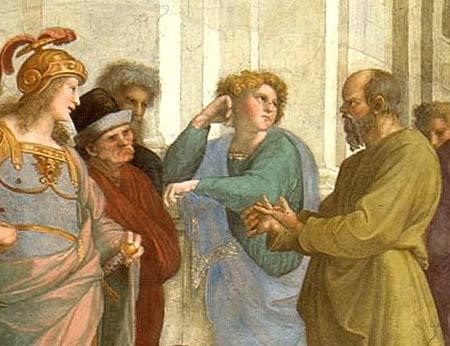e-Learning Ecologies MOOC’s Updates
Socratic Dialogue: a collaborative learning tool
"By the beginning twentieth century, educational thinkers and practitioners from John Dewey to Maria Montessori and Rabindranath Tagore, were to offer systematic critiques and practical alternatives to didactic pedagogy. We call these “reflexive” in the sense that they represent in certain senses a revival of the dialogical, where the agency of the learner is at play in a dialectic between teacher and learner, the to-be-learned and the learning" (Cope, B. & Kalantzis, M. 2016)
The dialogical aspect to be revived in the passage cited refers to one of the first examples documented in Western philosophy, represented by the dialogues between Socrates and other individuals and recorded by his pupil Plato. Known for assuming that he does not hold all existing knowledge and being willing to reach the truth through his Socratic Method, Socrates applied a dialogical pedagogy, in which the dialogue between student and teacher built a bridge in which both could reach new knowledge and answers. This dialogue was guided by the maieutiké tèchne, Socrates' method which means midwifery.
"He did so mostly by questioning: first driving his collocutors into self-contradiction (elenchus) and thus freeing them of their false preconceptions and then helping them deliver the true knowledge. " (D. Knezic et al, 2010)
An interesting example that I saw in my research and demonstrates a little bit of Socratic Method in a dialogue of a classic Quentin Tarantino film is the following:
Ahead, the Socratic method inspired other dialogical methods that relate to it and are used in teaching. Among them, what most caught my attention for being related to the idea of Collaborative Intelligence (Cope, B. & Kalantzis, M. 2016) was the definition proposed by D. Knezic et al, which defines Socratic Dialogue based on other authors according to the following excerpt:
"The Socratic Dialogue is a philosophical group dialogue in which the participants guided by a facilitator and a number of ground rules strive to reach a consensus in answering a fundamental question on the basis of a real-life example or incident with the purpose of achieving new insights"(D. Knezic et al, 2010)
The dialogue begins with a general, clear and formulated question that can be suggested by the group or the moderator, such as "What is a person?" Before the debate begins, participants write their answers to this question on a piece of paper and keep that piece with them. After that, the participants give examples of what they consider "people" and then one of these examples is selected to be clarified and addressed. It is important to note that there is a need for consensus in choosing the example, which reinforces the collective and social character of the Socratic Dialogue. The dialogue continues with the analysis of the selected example and the search for a consensual answer to the question. The mediator is important in this step because it will direct the dialogue, preventing participants from straying from the subject and avoiding excessive abstractions. At the end of the debate, a Meta-Dialogue is also made, which is a stage that offers an opportunity for the person being questioned by the group during the Socratic Dialogue to seek support if the person experiences any negative consequences during the dialogue. Finally, an answer can be reached or not through dialogue, resulting in a common concept formation coming from the group's teamwork. Furthermore, even if a response is not reached, virtues such as respect, the ability to listen, accept criticism of our positions, to accept error as natural to any human endeavor, learning from others and the experiences of others are reinforced – soft skills of collaboration and negotiation necessary for Knowledge Societies and Knowledge Economies.
As an example, in the study addressed by D. Knezic et al, the conceptual map resulting from the search for the answer to the question "What is a person?" looked like this:
It is important to note how the Socratic Dialogue does not seek a dispute between the participants and a comparison between its rhetoric, corroborating the idea of the bell curve with terrible students, a median majority and an excellent minority. In the Socratic-Dialogue the aim is to achieve the formation of a consensual concept in a collective effort in which the participating individuals learn from each other and help each other in the search for new knowledge. Therefore, an environment of Socratic dialogue is a collaborative environment, in which the fundamental aspects of what Bill Cope calls Collective Intelligence[1] are exercised: the recognition of a social heritage in the formulation of examples and the recognition of the participation of different individuals in the construction of new knowledge (in this case, the answer to more philosophical questions) through their collaborations and feedback on what they think of each statement listed in the dialogue. It focuses on learning as a social activity rather than learning as individual memory.
References:
[1] https://www.coursera.org/learn/elearning/lecture/CoWOQ/collaborative-intelligence-part-5a-social-learning
https://filosofiacritica.wordpress.com/o-que-e-um-dialogo-socratico/>
https://www.igi-global.com/dictionary/the-socratic-way-and-adult-learning/72063
Knezic, D., Wubbels, T., Elbers, E., & Hajer, M. (2010). The Socratic Dialogue and teacher education. Teaching and Teacher Education,




great researched and structured update! thanks for all the references!